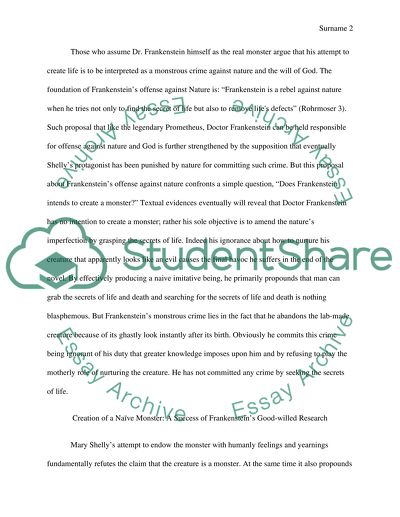Frankenstein's Attempt to abandon the Creature in the Real Monster Essay. Retrieved from https://studentshare.org/english/1449202-who-is-the-real-monster-in-the-story-frankenstein
Frankenstein'S Attempt to Abandon the Creature in the Real Monster Essay. https://studentshare.org/english/1449202-who-is-the-real-monster-in-the-story-frankenstein.


